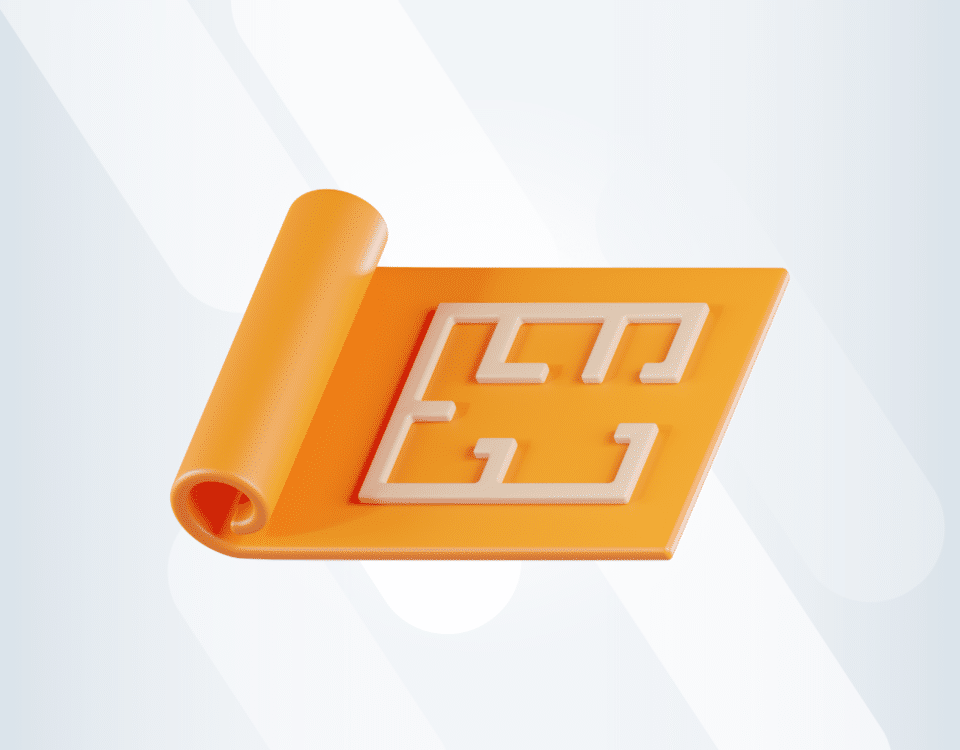Construction Tips, News & Best Practices
5 Sustainable Construction Materials that You Need to Know
Can you imagine using mushrooms, straw bales or recycled plastic in your construction process? If not, check out our article and learn all you need to know about sustainable construction materials! Who knows, maybe they are perfect for your company?
What materials does your company use for building processes? Steel, concrete or maybe wood? These are one of the most popular materials in construction. However, for a few years now, we can observe some changes in the market. To be more precise, the rise of popularity of sustainable construction materials!
You probably have already heard about sustainable construction materials, but do you know what this term exactly means? Or can you give some examples of eco-friendly building materials on the market? Maybe your company is already using them, and you are not even aware! Today, we will spill the tea and present all the information you need about green building materials. Let’s go!
What Are Sustainable Construction Materials?
A material can be qualified as sustainable if it is produced from renewable resources or if it has no adverse effect on the environment during its lifespan. Such a definition sounds quite simple. Unfortunately, it is almost impossible for any material to meet these criteria in real life, especially to have no negative impact on the environment.
That is why in the industry, the term sustainable is treated more widely as material that tries to minimise its impact on the environment or, in some cases, has some positive effect on the planet.To make it more clear, let us introduce one more important term: Green Building.
What Is Green Building?
Green building, often called sustainable building, means building in an environmentally responsible way by reducing the negative impact of the building process and increasing its positive effects. Green building refers to all stages of the construction process, from the initial design to the final demolition.One of the actions of green building can be the use of sustainable construction materials.
Check out our whole article about green building to learn more!
What Are The Most Popular Sustainable Building Materials?
- 01
Bamboo
Did you know that bamboo is considered as one of the best sustainable materials currently on the market? Why? There are a few pretty solid reasons for that!
The first of them is definitely its speed of growth. Bamboos are one of the world's fastest growing plants (one of the species even beat the world record)! They can be cultivated and harvested in a short time, between 3 and 5 years, which is extremely short compared to trees (around 20-25 years). Thanks to such speed, bamboo is pretty cheap compared to other sustainable substitutes.
What can be surprising is the strength and flexibility of a bamboo material. Its strength is around 28 000 N per square inch (while steel is approximately 23 000 N per square inch). Also, it can compete with the most traditional materials like steel, plastic or concrete as bamboo, unlike them, can release oxygen into the air during the planting.
However, even the best solutions are not flawless. Bamboo is a tempting food for termites and some species of fungus. That is why it needs to go through the preservation process. Unfortunately, sometimes the only preservation possible on the market is a chemical one, which can heavily harm the environment.
- 02
Cork
Just like bamboo cork is another fast-growing “material”. It can be harvested every 9-12 years, but what is even crazier, cork can be harvested from living trees! It means that you do not need to cut it (like wood). Such a process doesn’t harm the tree because cork bark can regenerate itself. What’s more, during the process of regeneration, it absorbs CO2, which makes it even more eco-friendly!
However, harvesting is not the only plus of such material. Cork is also very flexible, light and resilient from fire or water. It is often used for floor production as it absorbs well noises and can be a natural insulator.
What is a downfall of cork as the sustainable solution is that it grows mainly by the Mediterranean sea, so to use it in different parts of the world, it has to be transported (often by ships which use a lot of energy and generate extra pollution). On the other side, cork is very light, so a lot of it can be transported on one ship (compared to other more traditional materials).
- 03
Recycled materials
"If it can’t be reduced, reused, repaired, rebuilt, refurbished, refinished, resold, recycled, or composted then it should be restricted, designed or removed from production.
"
– Pete SeegerWe produce an alarming amount of rubbish. Only in 2014, the UK generated 202.8 million tonnes of waste, and construction was responsible for almost 59% of that. If we don’t start now, soon there won’t be enough space for our rubbish!
That is why a perfect solution for sustainable materials is to create them from already existing ones. It can be done from almost everything: metal, plastic, glass, bricks, insulation but also coverings and packaging.
The benefits are enormous, so let’s just name a few: less waste, energy savings, water savings and reduction of carbon footprint. Recycled materials match the originals in terms of strength, lifespan and water resistance. The only exception is wood! It has less strength than the original and can be destroyed by insects, so it requires a thorough check before using it again.
- 04
Fungi
It may sound futuristic and unbelievable, but the reality of living in buildings made of fungus may soon become true. A material made from mushrooms is known on the market as bioplastic or biocomponents.
What are the characteristics of such materials?
Probably, we don’t have to tell you that it is 100% biodegradable, cheap and lightweight but did you know that it can be stronger than concrete? It is also non-toxic and fire/waterproof.Among our list, it is the only material that is actually living! What does it mean? When we place two alive, individual mycelium bricks together, the mycelium will rapidly spread amongst them and become the bonding material.
However, at least for now, fungi material is not a perfect solution on the market. Its lifespan is around 20 years as water resistance declines after time. It is because fungi are all the time active and can be impacted by mould or humidity.
- 05
Straw Bales
Last but not least, you can use straw bales as a sustainable construction material. Compared to fungi bricks, the idea to use straw may look like it was taken from the 18th century. Straw bales were indeed used in the past, but now the technique of using them has changed diametrically.
If you are still not convinced, let’s list some benefits. Straw is a natural material available locally, which means that it does not require long-distance transportation (which generates a carbon footprint). Also, straw bales are fire-resistant and suitable for air circulation as they provide a high level of insulation. The only significant downfall of this solution is that walls made from straw bales are thicker, which means they can perform worse in terms of soundproofing.
Sustainable Construction - Other Solutions
Green Building is a vast term that doesn’t focus only on materials. The main idea of sustainable construction is to change your business and processes in order not to harm the environment.
It sounds easy, but let’s check if your company is really eco-friendly:
Are your processes and projects scheduled optimally without any delays and overlaps?
Are your machines working efficiently without downtimes, using only the amount of energy that they need?
Are your purchase orders under control without buying at the last minute some extra materials or fabrics that are later useless and become nothing but excess rubbish?
These are only some sample questions, but they can give you a good overview of your company. If there was at least one negative answer to any of these questions, it means your company doesn’t work sustainably. It even doesn’t work optimally for you, impacting your time, costs and profits negatively!
The solution for that can be a Construction Management Software that will support your daily processes, planning them optimally and reducing the carbon footprint!
If you want to learn more about how exactly digital solutions can help your company, contact us!
The First Step Towards Change
Perfect solutions don’t exist. There is no sustainable material with only positive impact on the environment. Still, the idea in Green Building is not to wait until a perfect solution comes in but to act and change with our current resources. Maybe implementing one of the eco-friendly building materials that we listed would be a good solution for the environment and your business?
If you want to read more articles about green construction, check our recent news from the UK Market about decarbonisation demand and sign up for our newsletter to stay updated with current news, trends and tips from the construction market!
Keep me updated!
1 Comment
You might also like
February 29, 2024 • 7 min read
Utilizing the human-first approach to construction projects to drive higher results.
July 3, 2023 • 6 min read
8 Best Construction Drawing Management Software (2023): A Comprehensive Guide
Find all the information you need about the construction drawing management software tools available on ...June 14, 2023 • 6 min read
The 11 Best PlanGrid Alternatives (2023)
Looking for a great alternative to PlanGrid software? Check out the 11 best construction software tools ...June 14, 2023 • 4 min read
How to win at CIS 340 and make taxes a breeze
CIS 340 is a legal obligation for contractors. But getting it right isn’t straightforward. Want ...






That’s really nice post. I appreciate your skills, Thanks for sharing.